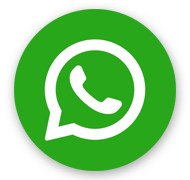 In the world of marketing and promotion, the humble flyer remains a powerful tool for reaching a wide audience quickly and effectively. Whether you’re advertising an event, promoting a business, or spreading awareness about a cause, a well-designed flyer can make a lasting impression. In this guide, we’ll explore the key elements of designing flyers, including types and dimensions that cater to different purposes.
In the world of marketing and promotion, the humble flyer remains a powerful tool for reaching a wide audience quickly and effectively. Whether you’re advertising an event, promoting a business, or spreading awareness about a cause, a well-designed flyer can make a lasting impression. In this guide, we’ll explore the key elements of designing flyers, including types and dimensions that cater to different purposes.
1. Define Your Purpose and Audience:
Before diving into the design process, clearly define the purpose of your flyer and identify your target audience. Knowing the message you want to convey and who you want to reach will guide the design choices.
2. Keep it Simple:
Flyers are meant to convey information quickly. Avoid clutter and focus on a clean, simple design that highlights key details. Use concise language and compelling visuals to grab attention.
3. Choose the Right Colors:
Color plays a crucial role in attracting attention and conveying emotions. Consider your brand colors and choose a palette that aligns with your message. High contrast can make text and images stand out.
4. Select Fonts Wisely:
Stick to two or three complementary fonts for a cohesive look. Ensure readability by choosing fonts that are easy to read, especially from a distance.
1. Event Flyers:
These are designed to promote events such as concerts, parties, or fundraisers. Use vibrant colors, captivating images, and highlight essential details like date, time, and venue.
2. Business Flyers:
Business flyers are used for promoting products, services, or special offers. Maintain a professional look, incorporate your brand elements, and focus on clear calls-to-action.
3. Promotional Flyers:
If you’re running a promotion or a sale, this type of flyer can help spread the word. Emphasize discounts, limited-time offers, and use persuasive language to encourage action.
4. Informational Flyers:
These flyers are used to share information about a cause, organization, or public service. Utilize clear headlines, informative content, and impactful visuals to engage your audience.
1. Standard Sizes:
• Letter size (8.5 x 11 inches): Commonly used for informational and business flyers.
• A5 size (5.8 x 8.3 inches): Compact and portable, suitable for various purposes.
• A4 size (8.3 x 11.7 inches): Larger than letter size, ideal for more detailed information.
2. Orientation:
• Portrait: Vertical orientation is standard and works well for most designs.
• Landscape: Horizontal orientation can be eye-catching and is suitable for showcasing wide images.
3. Margins and Bleed:
• Leave sufficient margins to avoid important content being cut off during printing.
• If your design extends to the edge, include a bleed (extra space) to ensure a clean finish after trimming.
Design Software and Tools
Several design tools are available to create visually appealing flyers, ranging from beginner-friendly to professional-grade software. Some popular options include Canva, Adobe Illustrator, and Microsoft Publisher.
Printing Considerations
Once your flyer is designed, consider the printing process. High-quality printing enhances the overall look of your flyer. Pay attention to paper quality, finish (glossy or matte), and color accuracy.
In conclusion, designing effective flyers requires a thoughtful approach that aligns with your goals and resonates with your target audience. By understanding the types of flyers, choosing appropriate dimensions, and implementing design best practices, you can create eye-catching promotional materials that leave a lasting impression on your audience.




